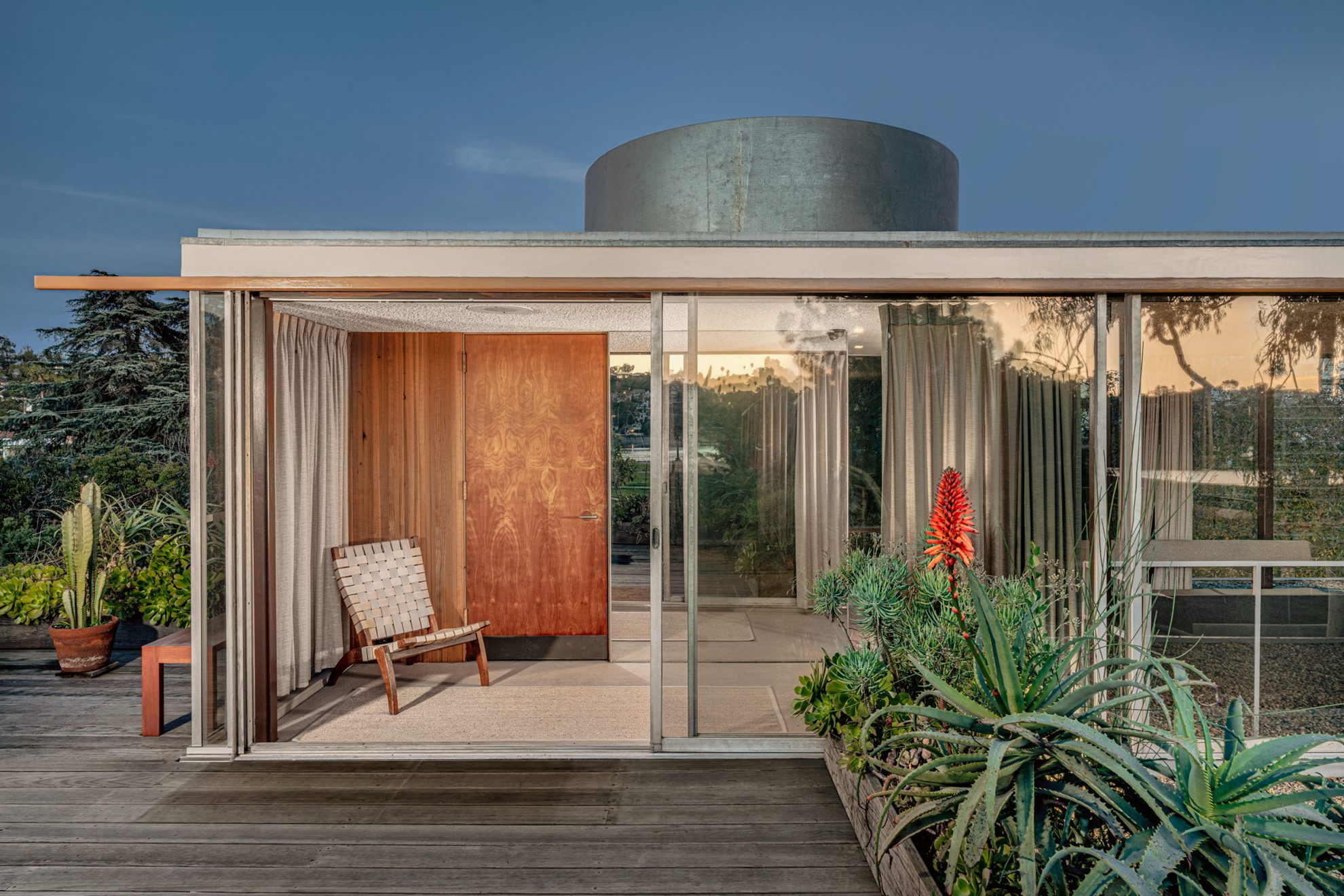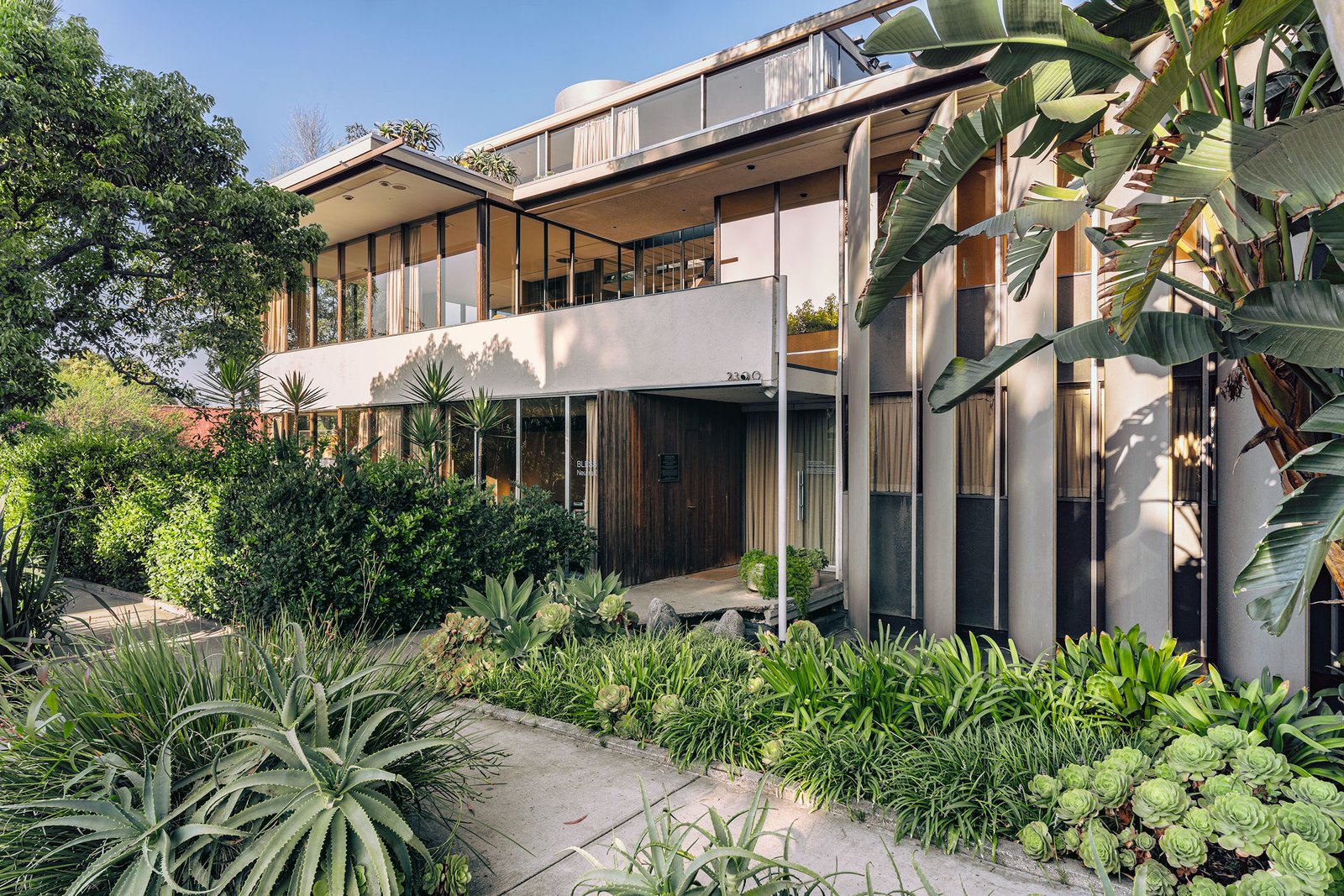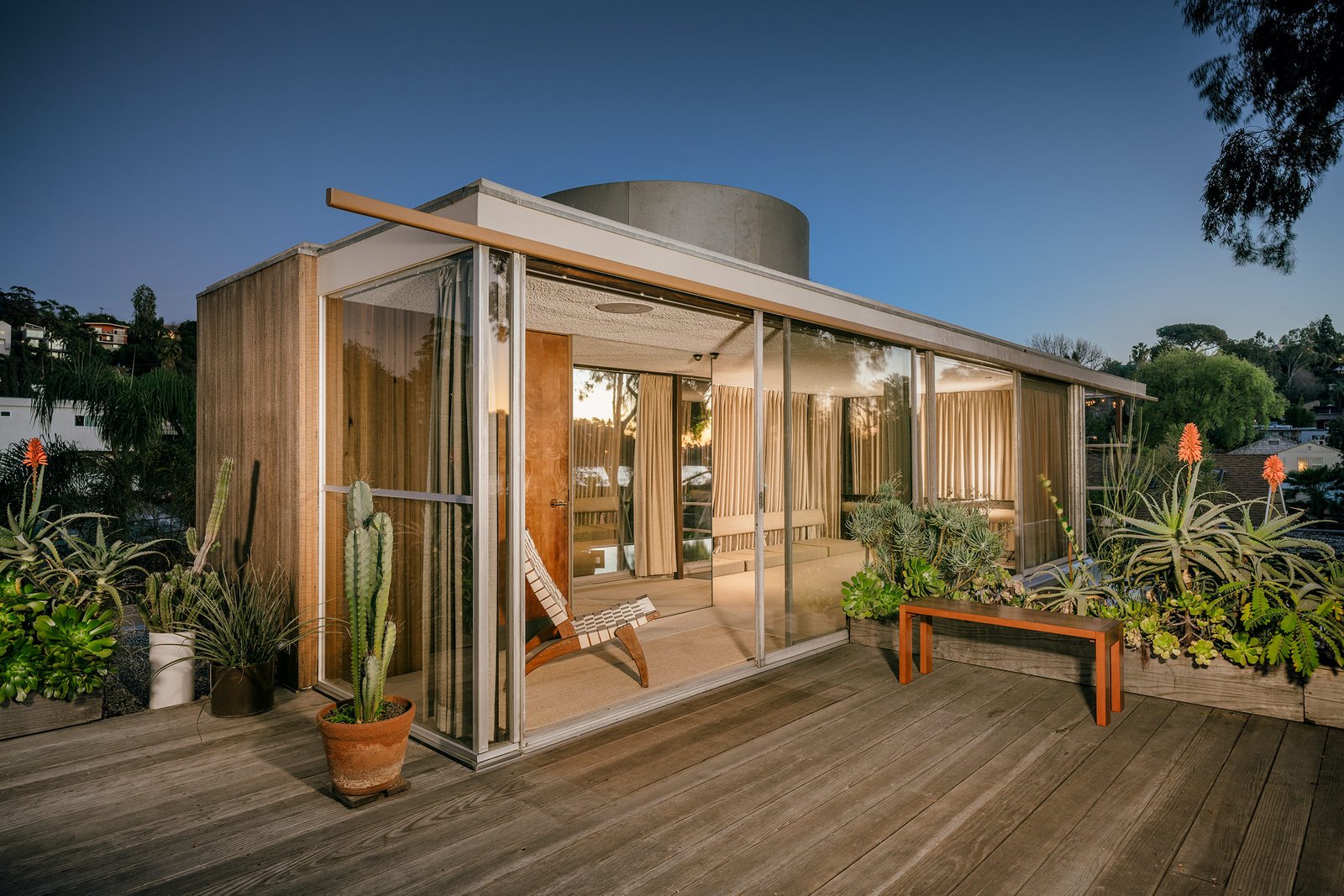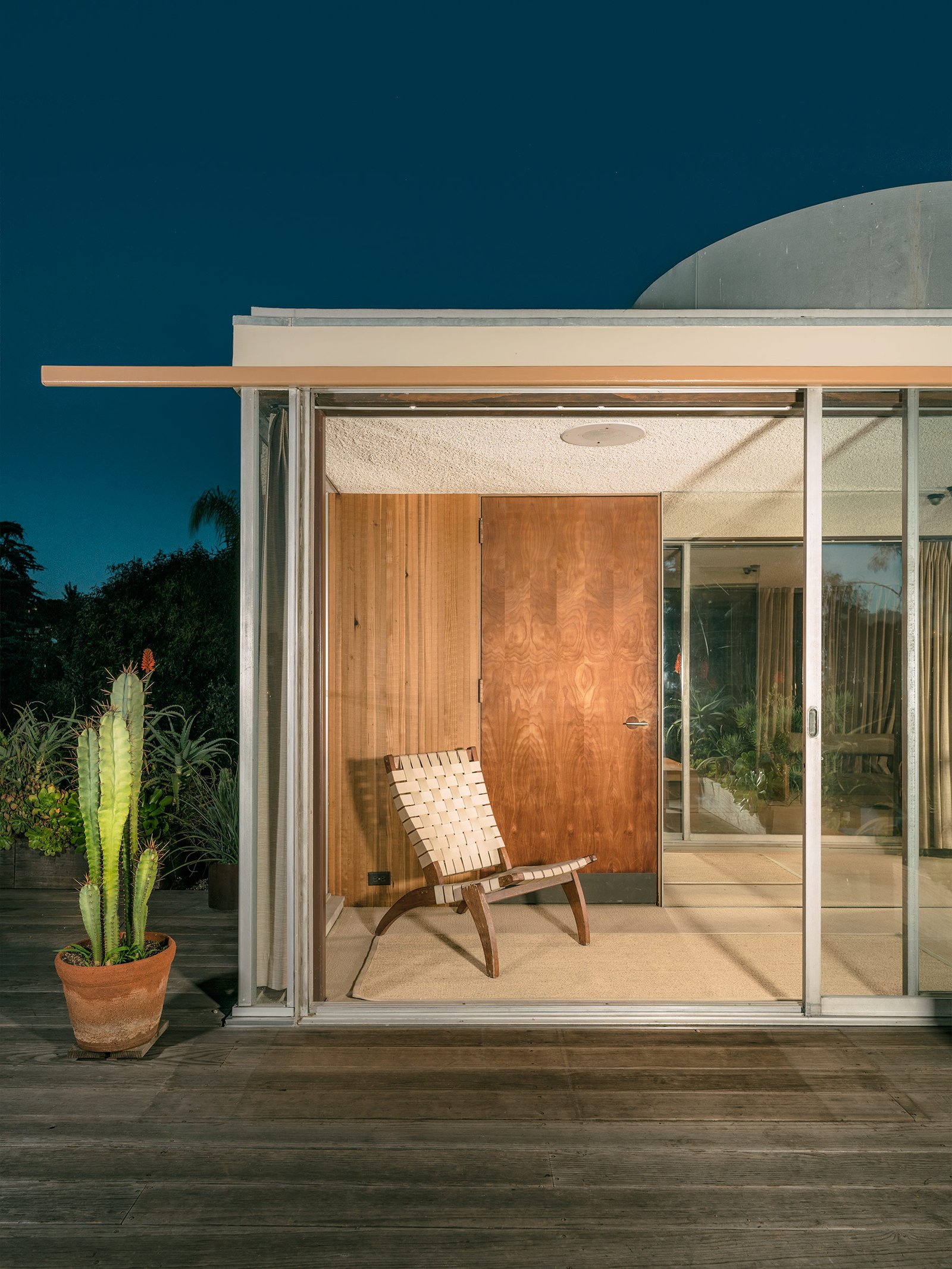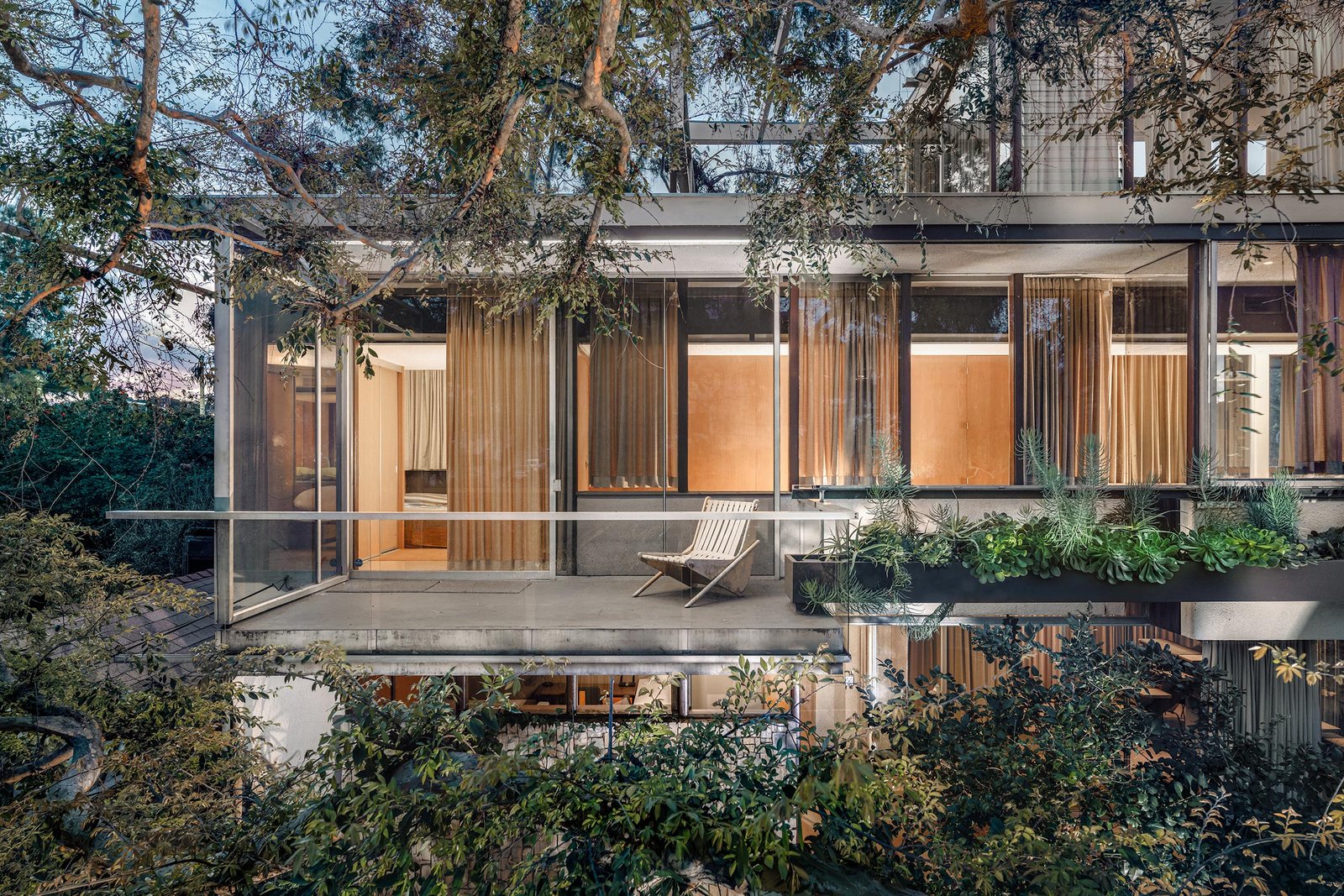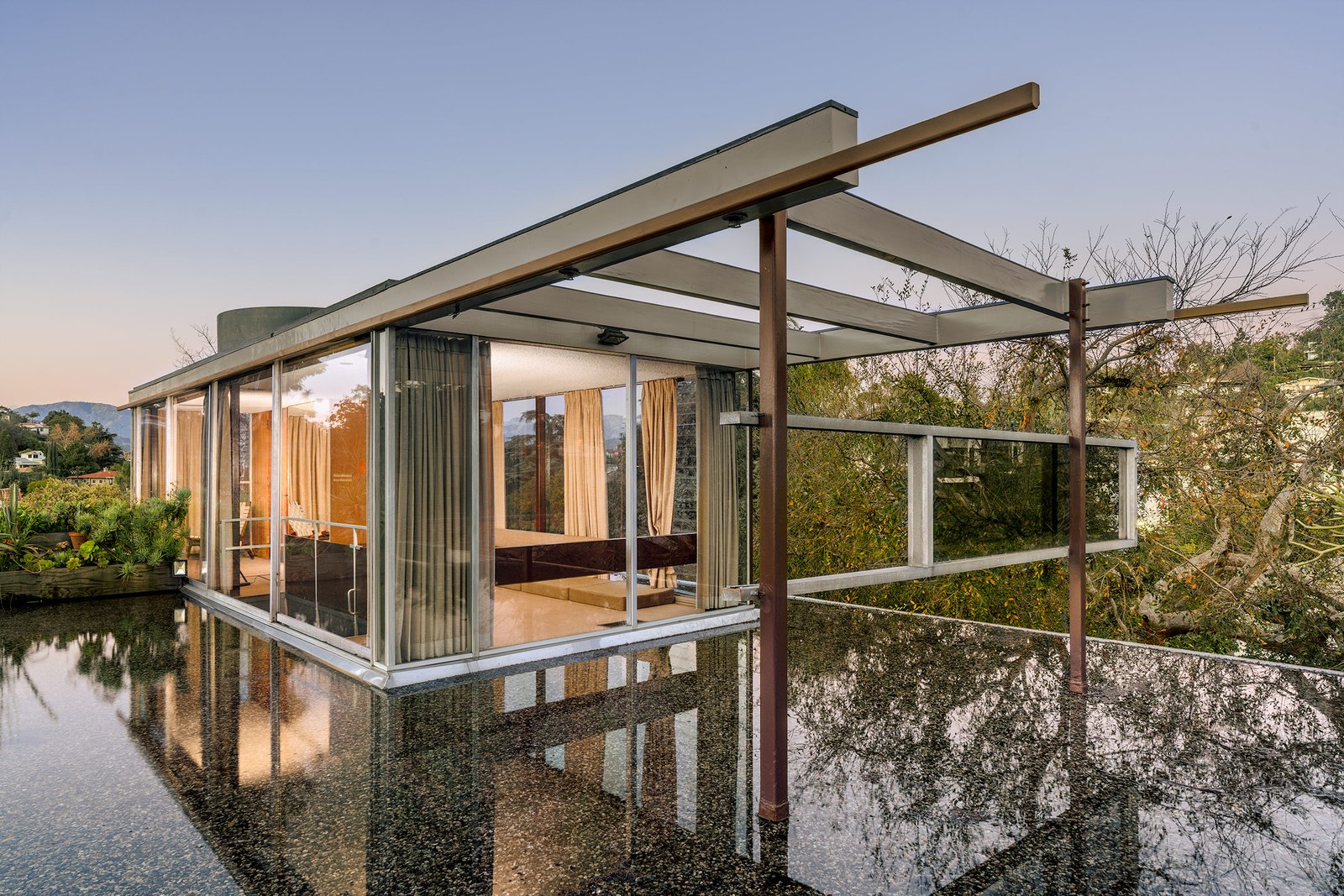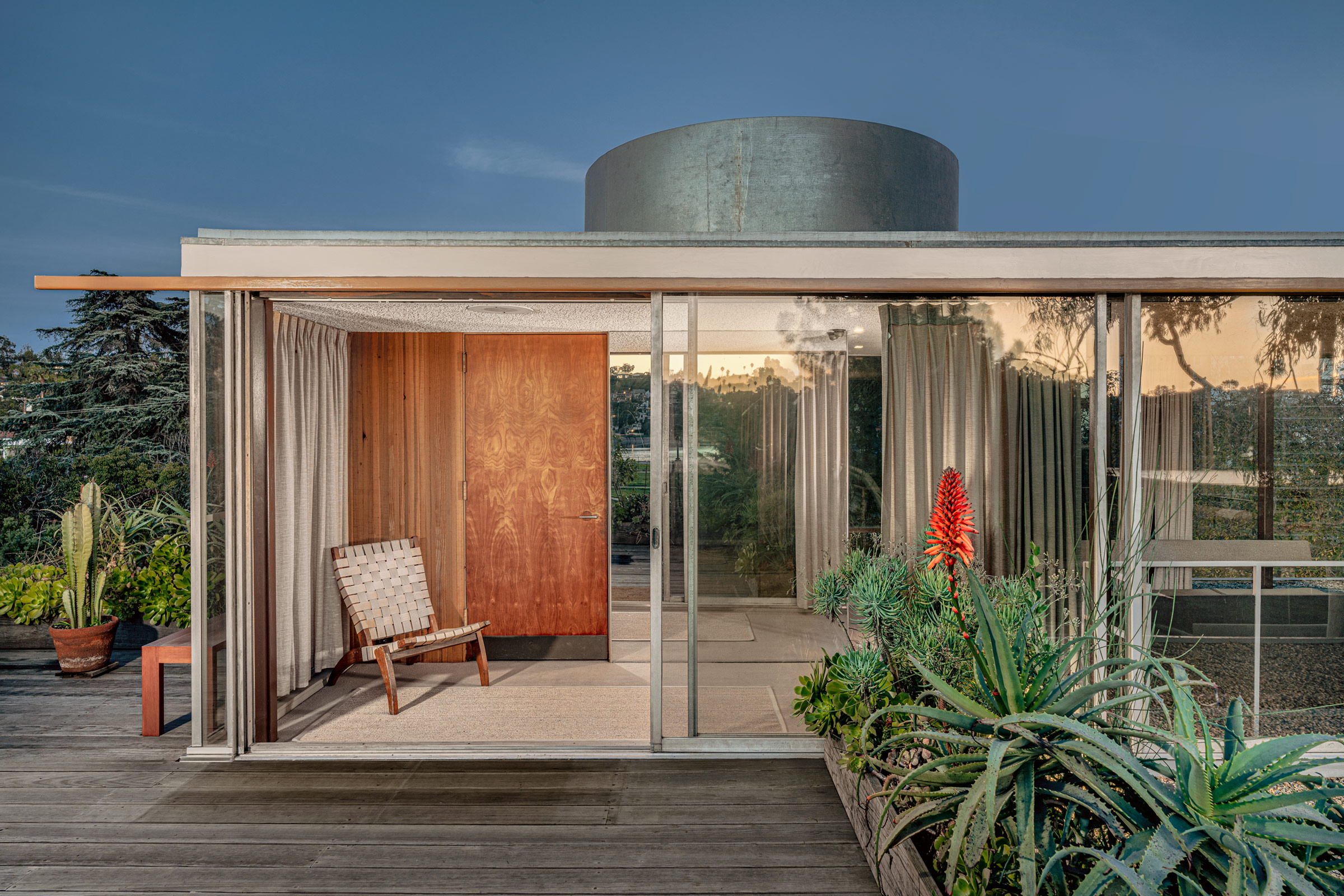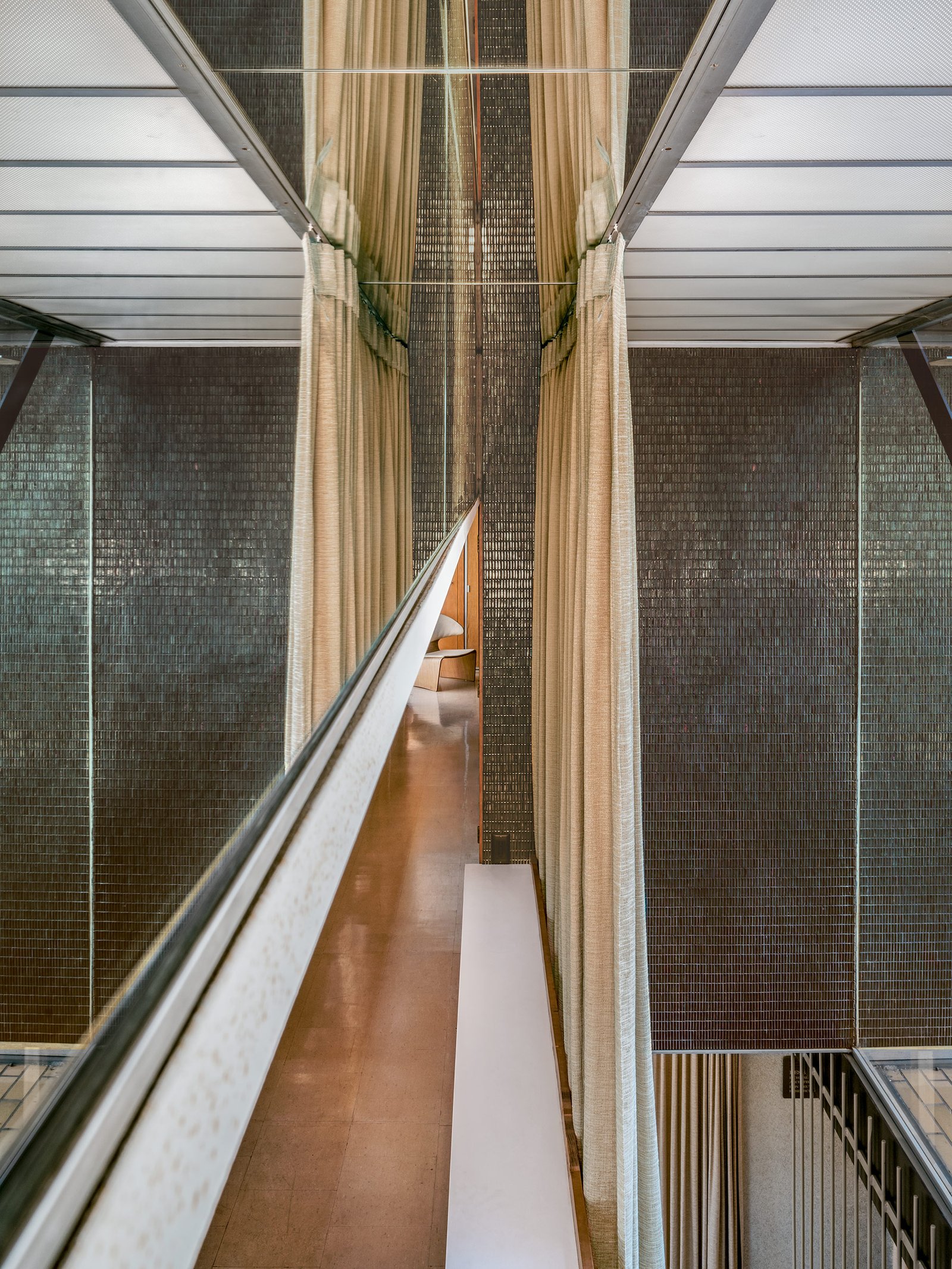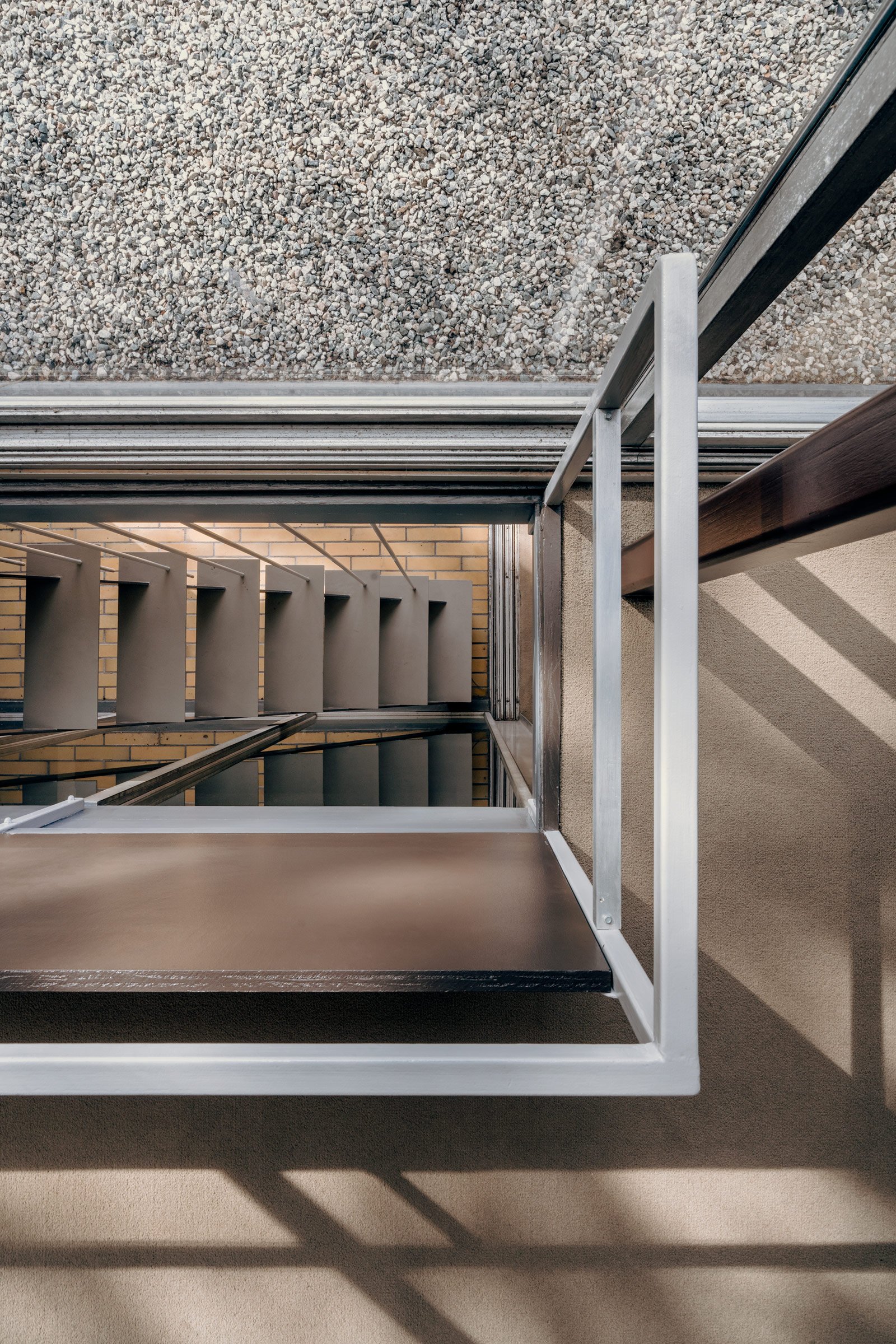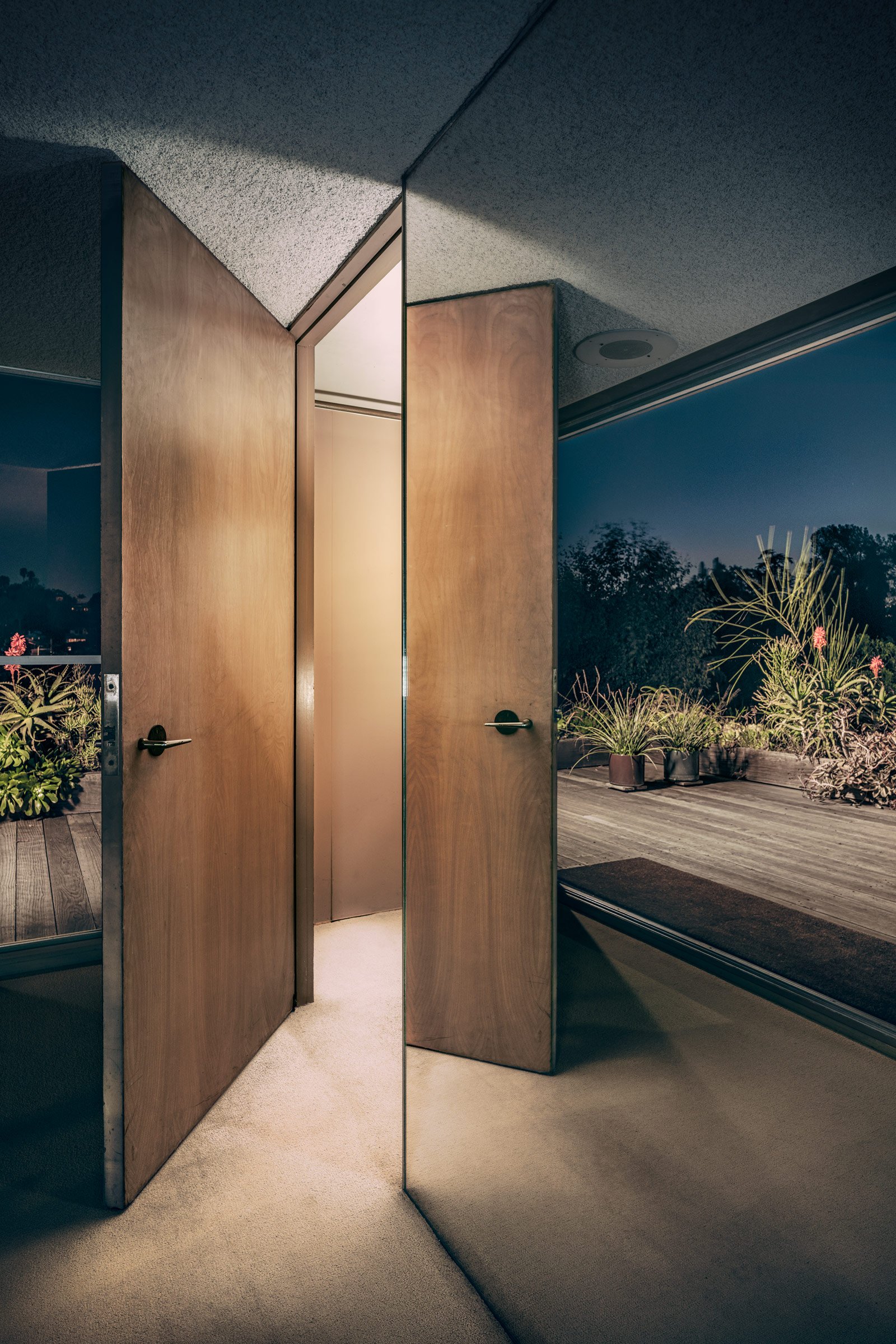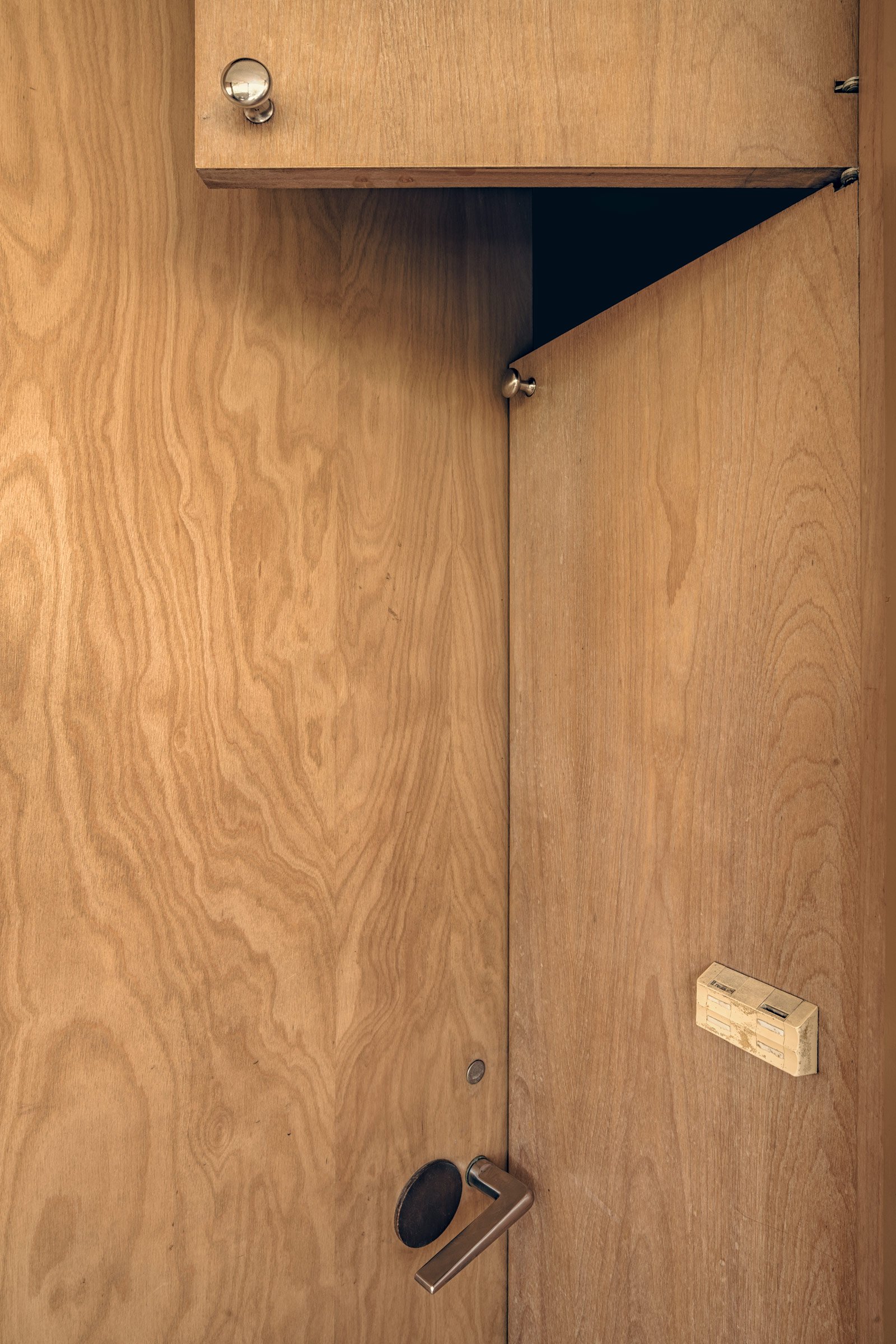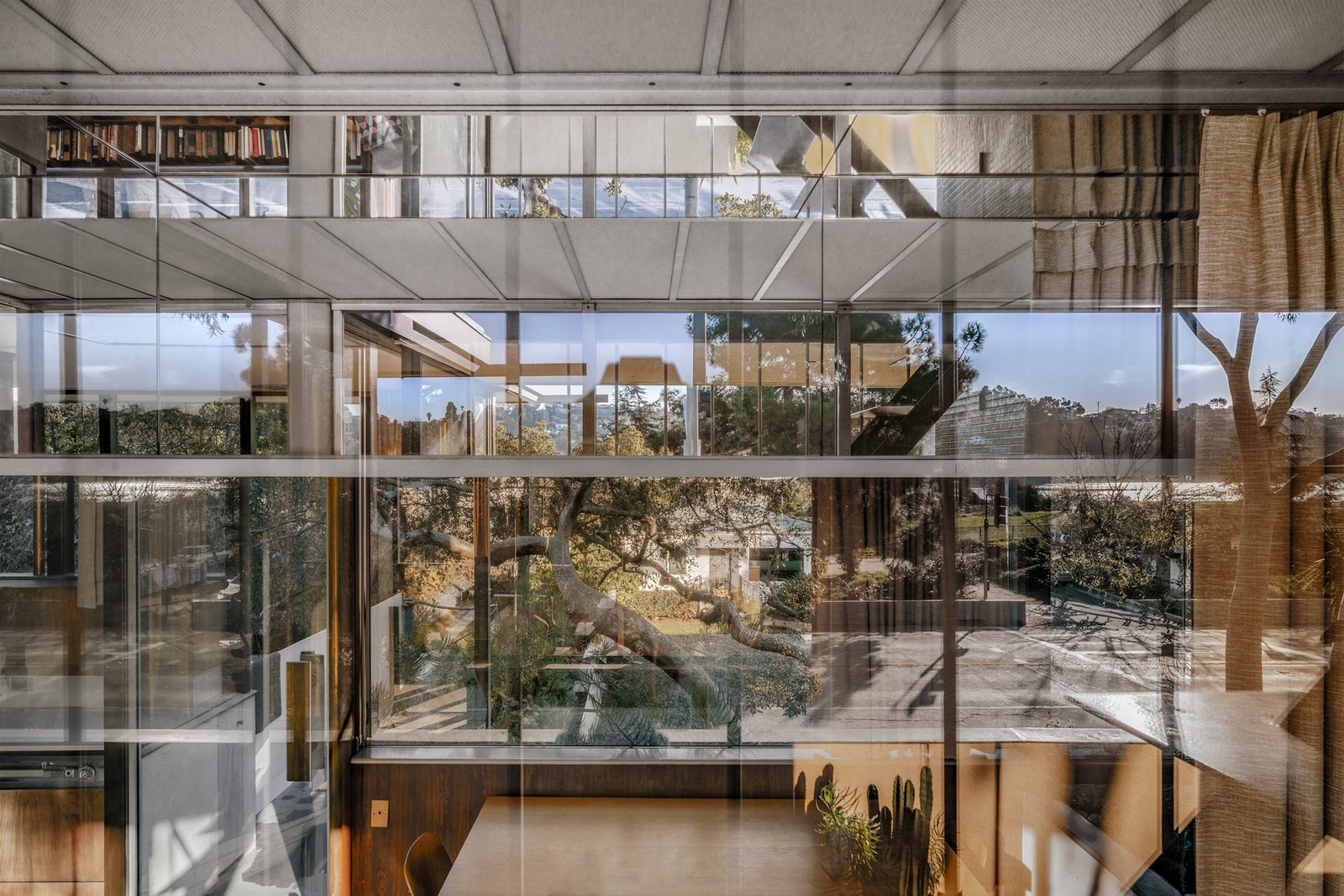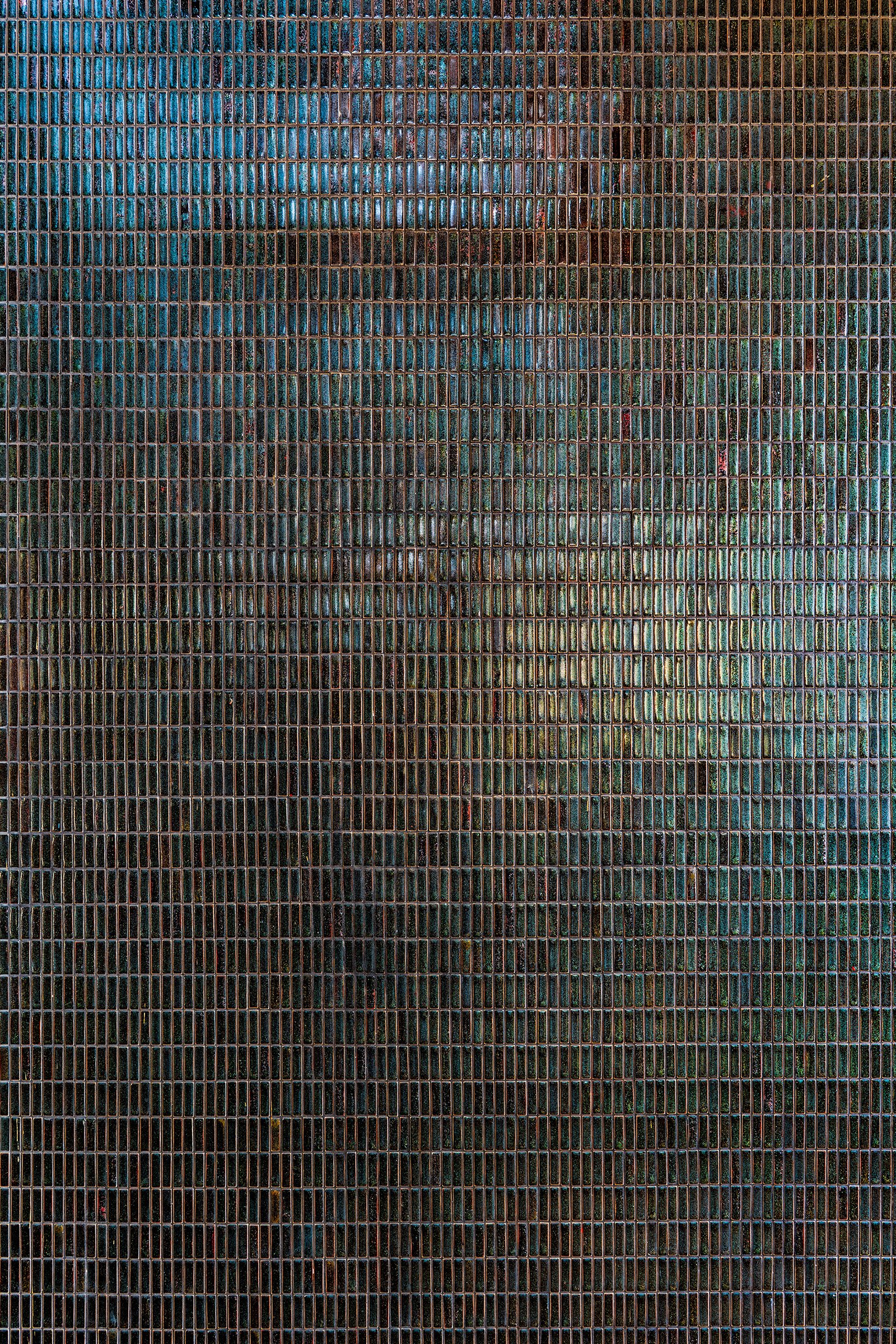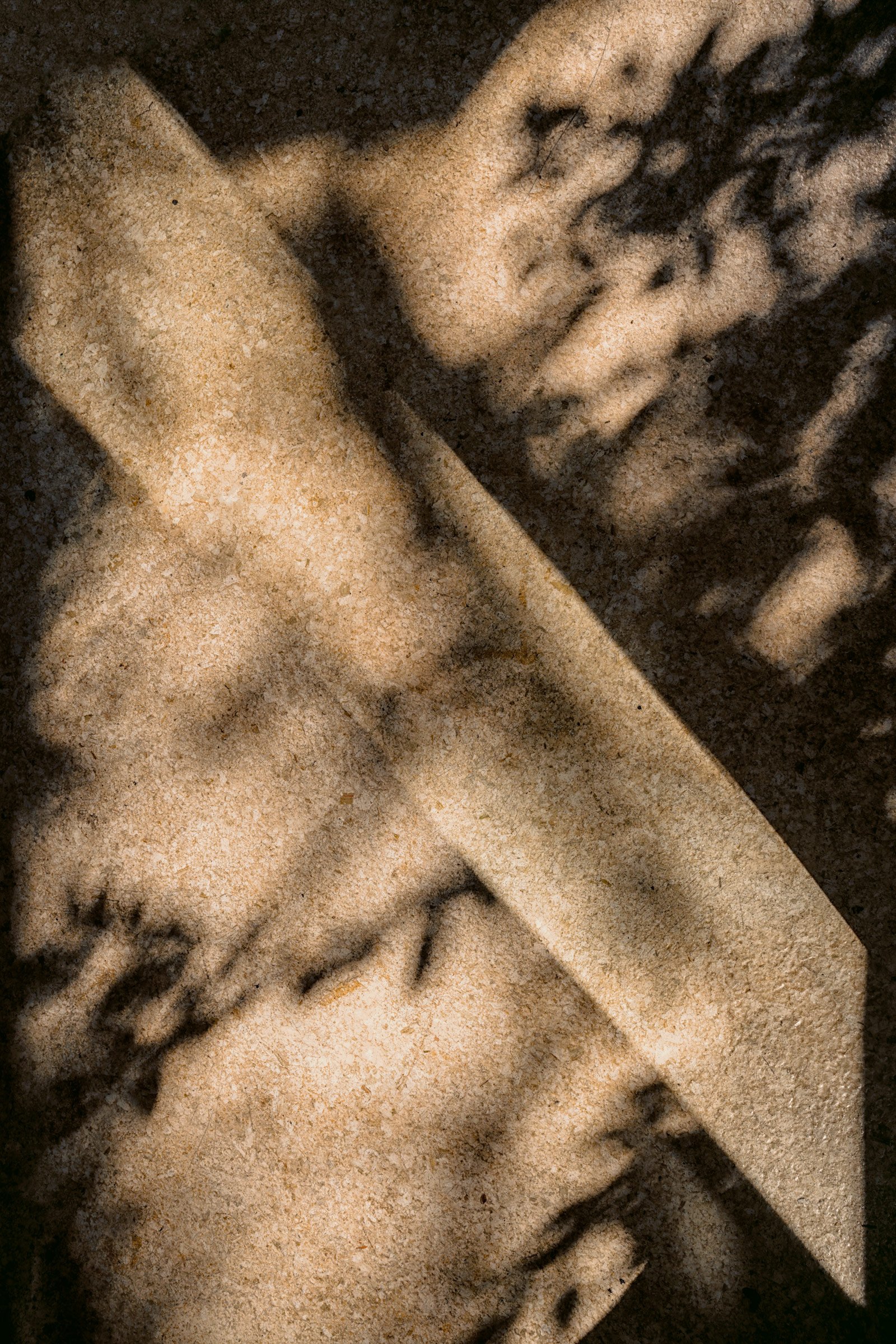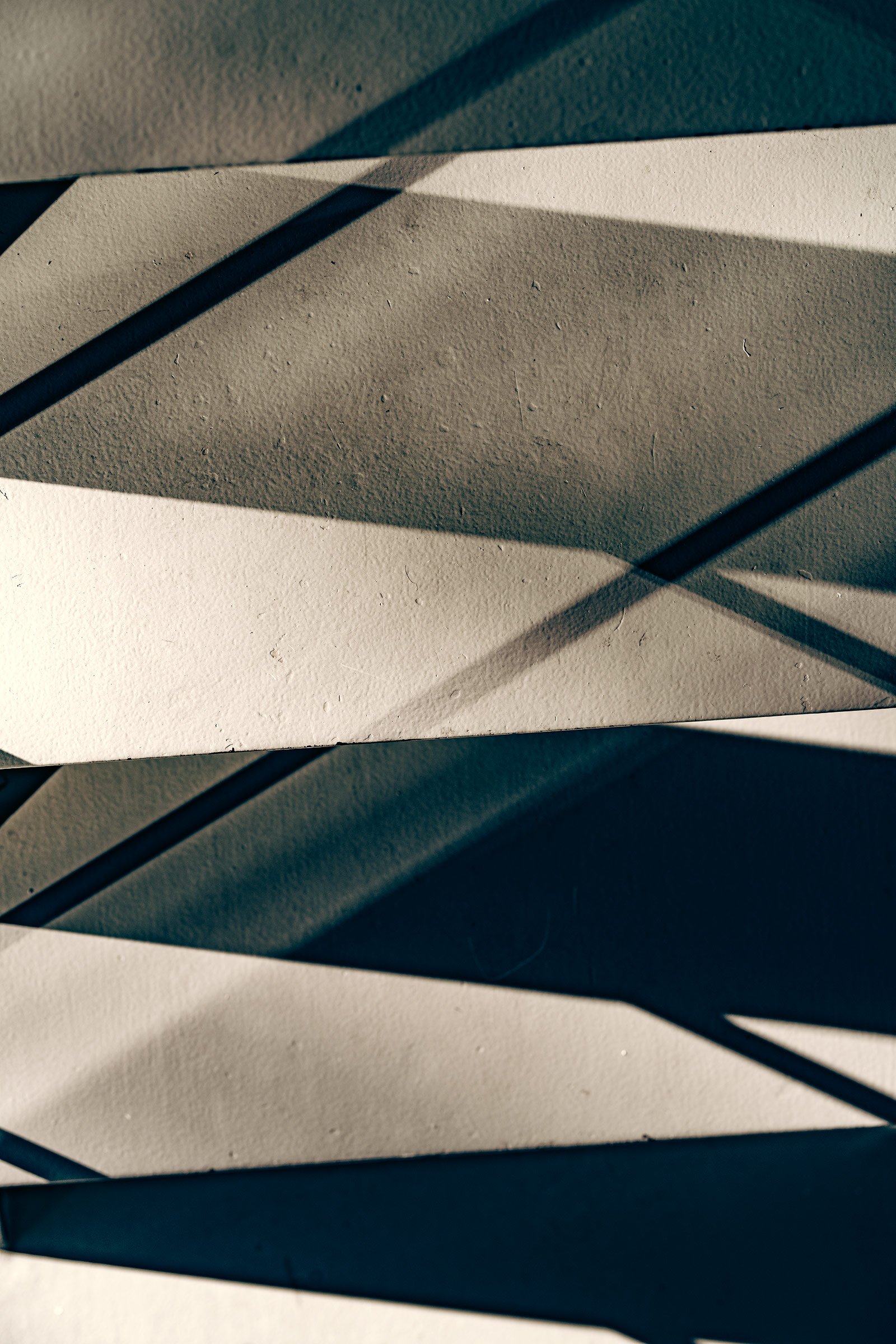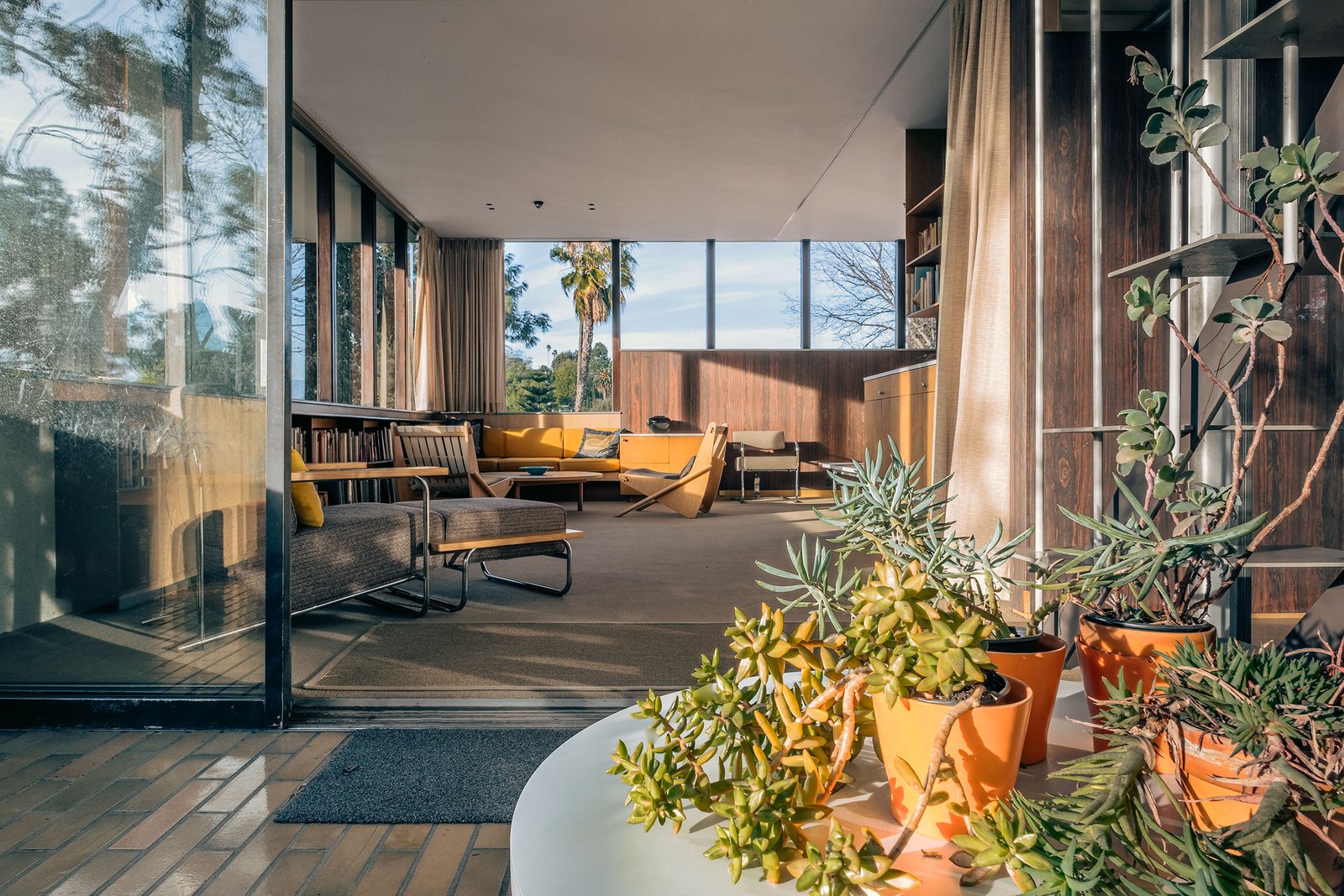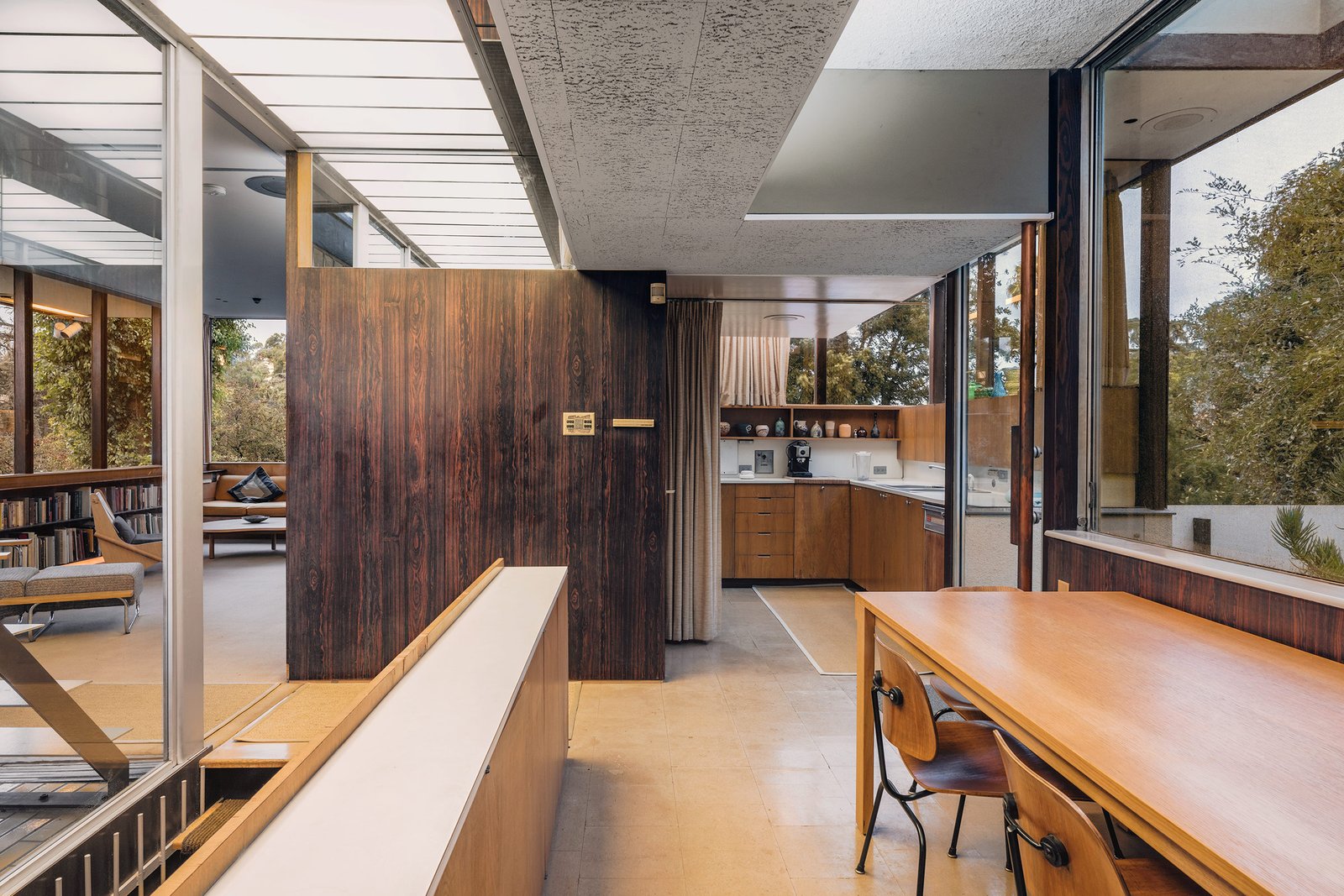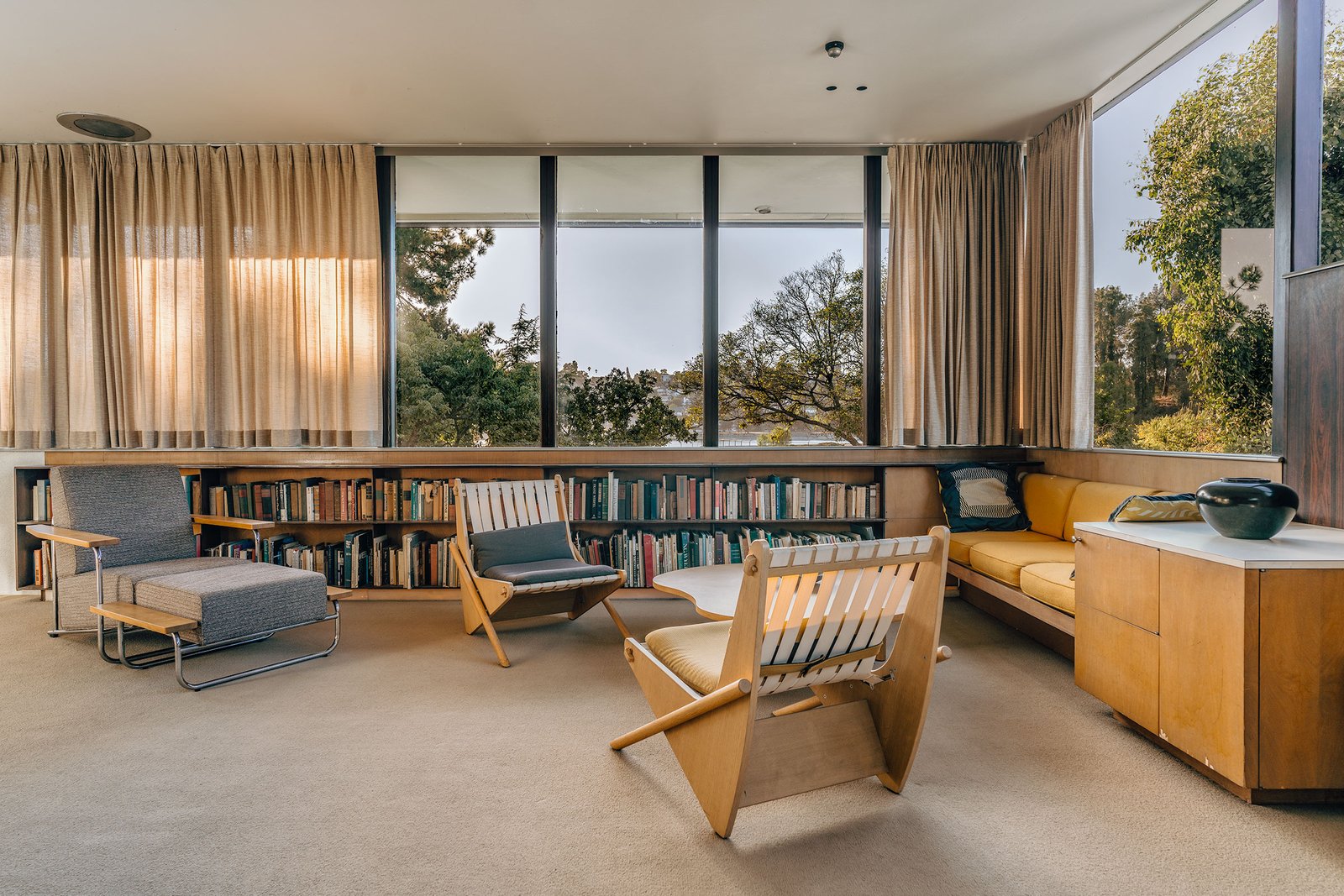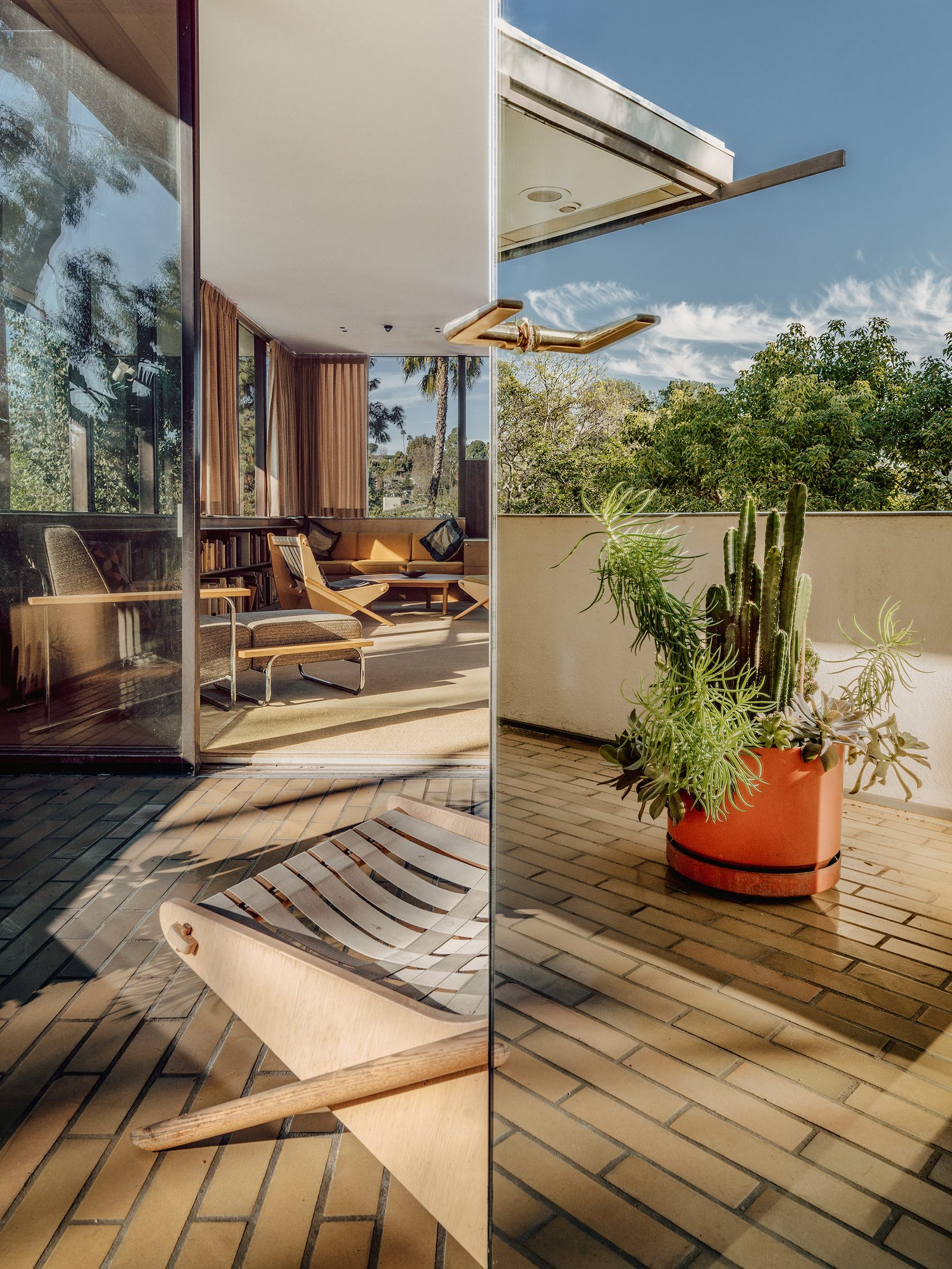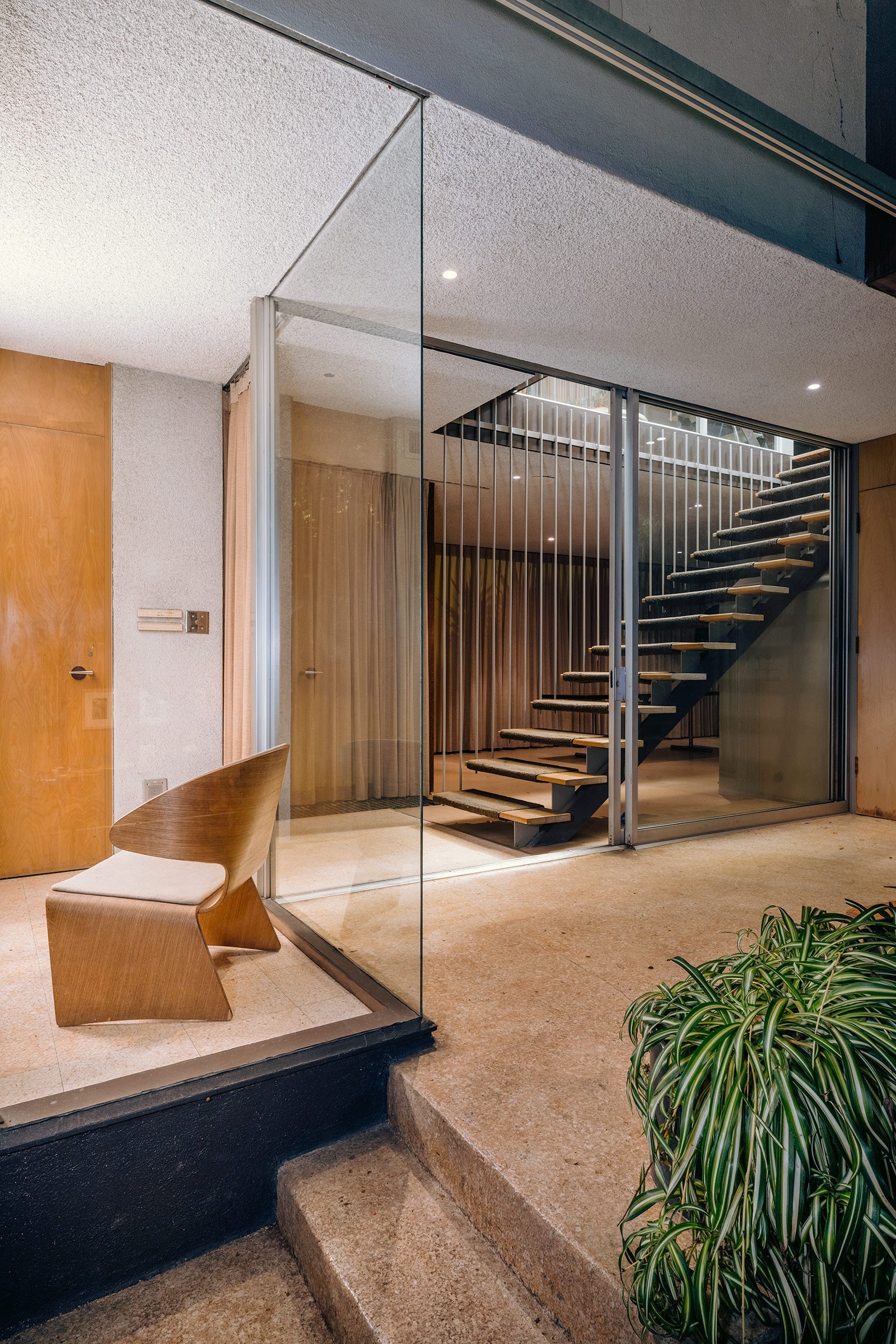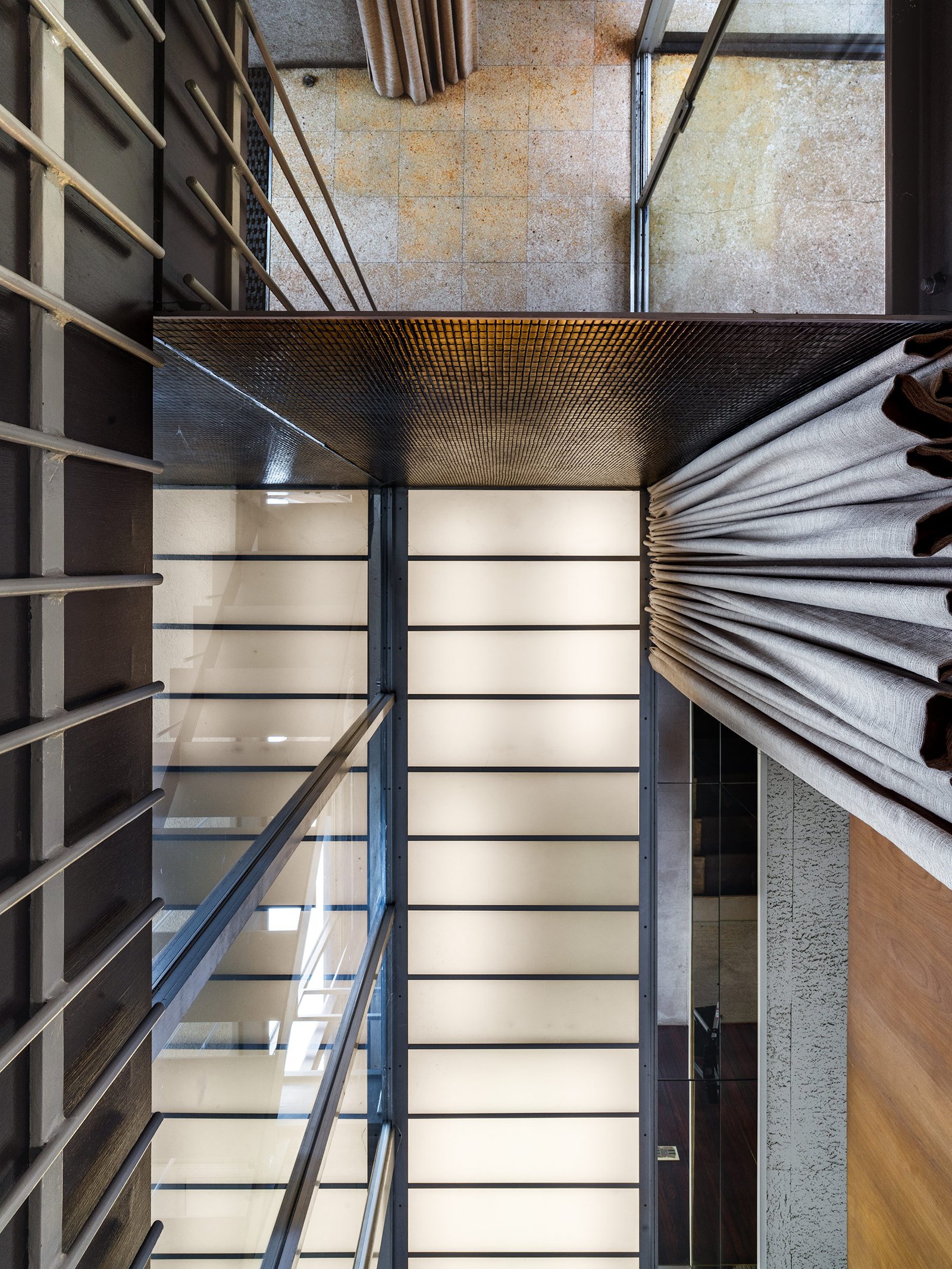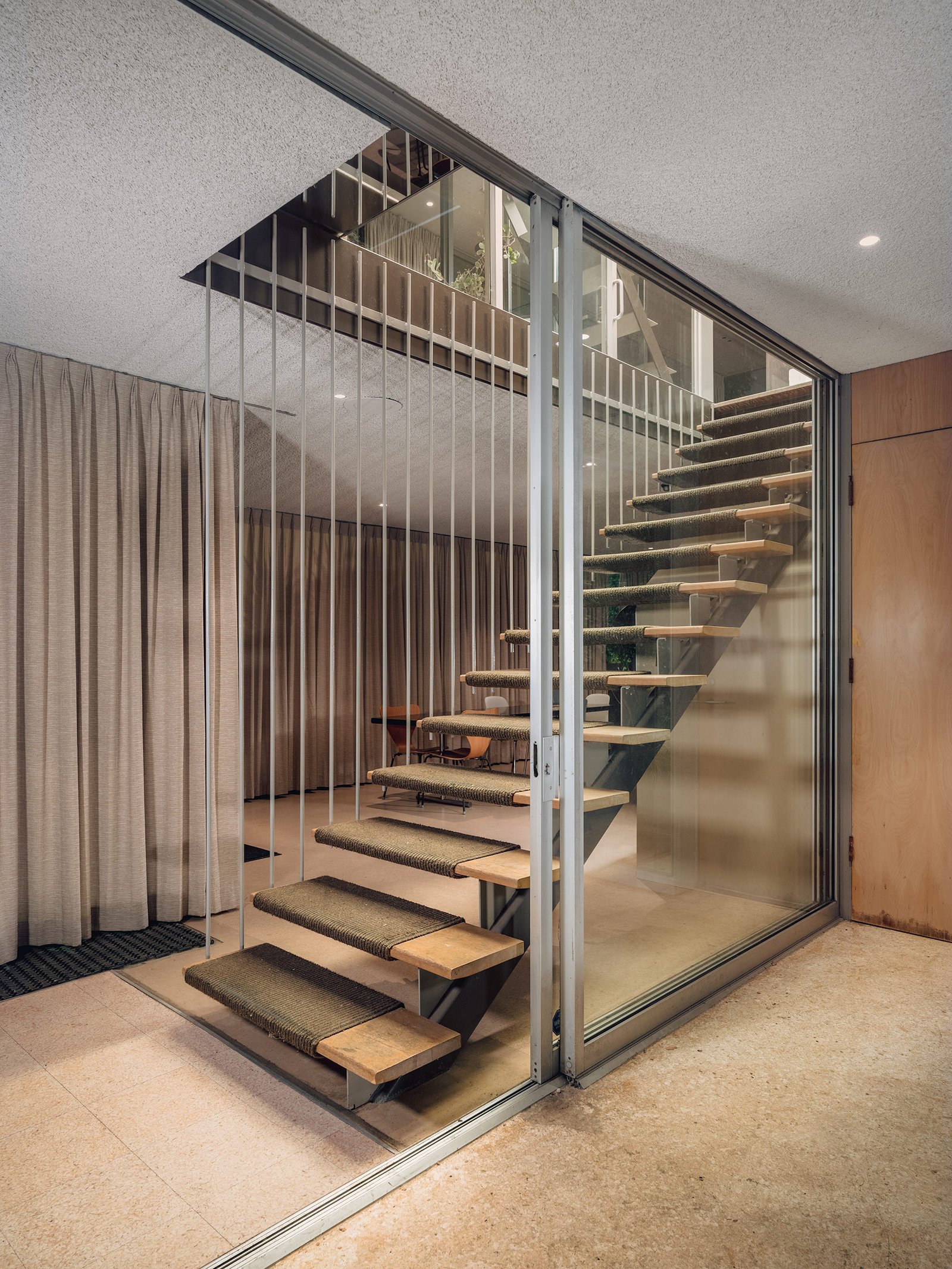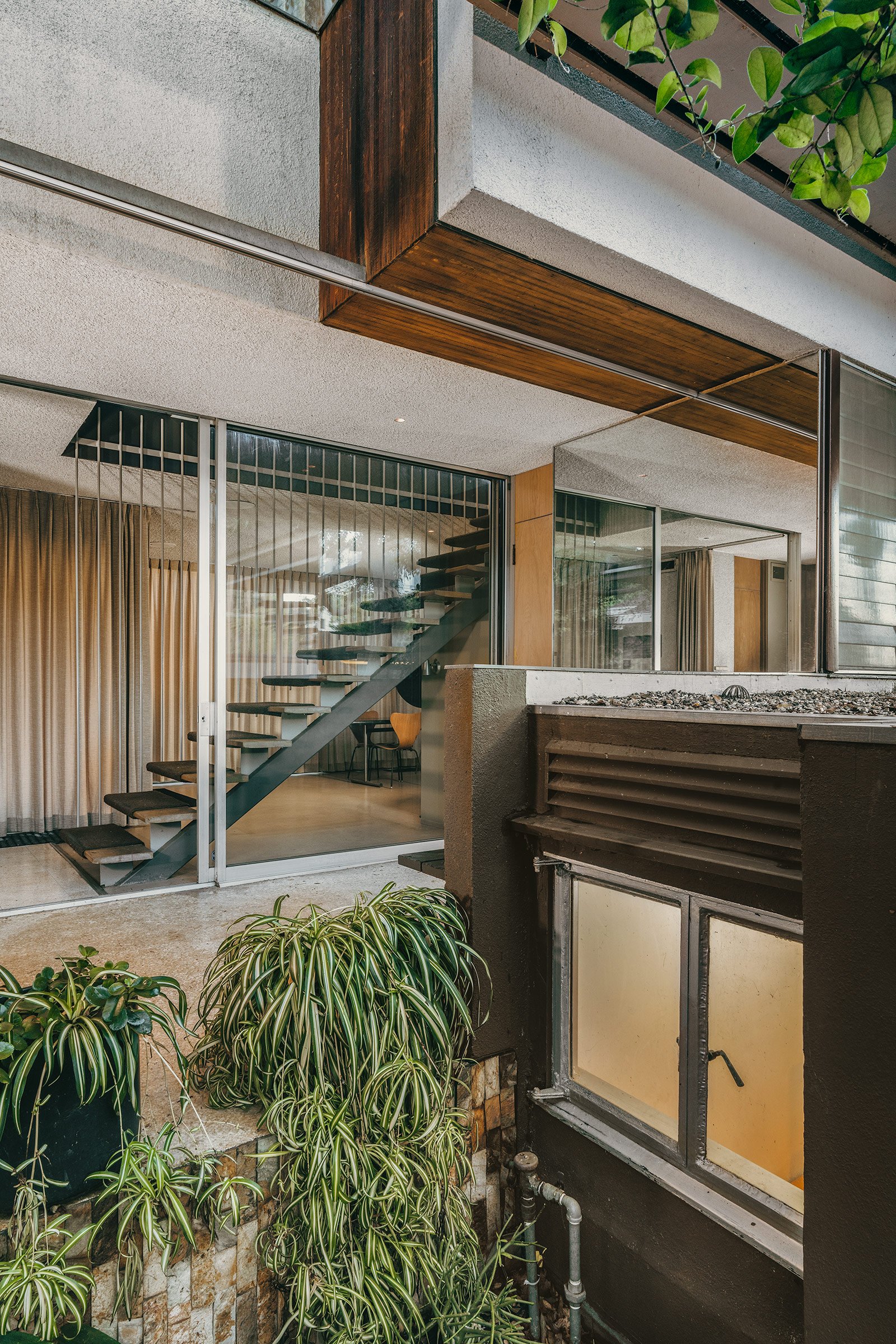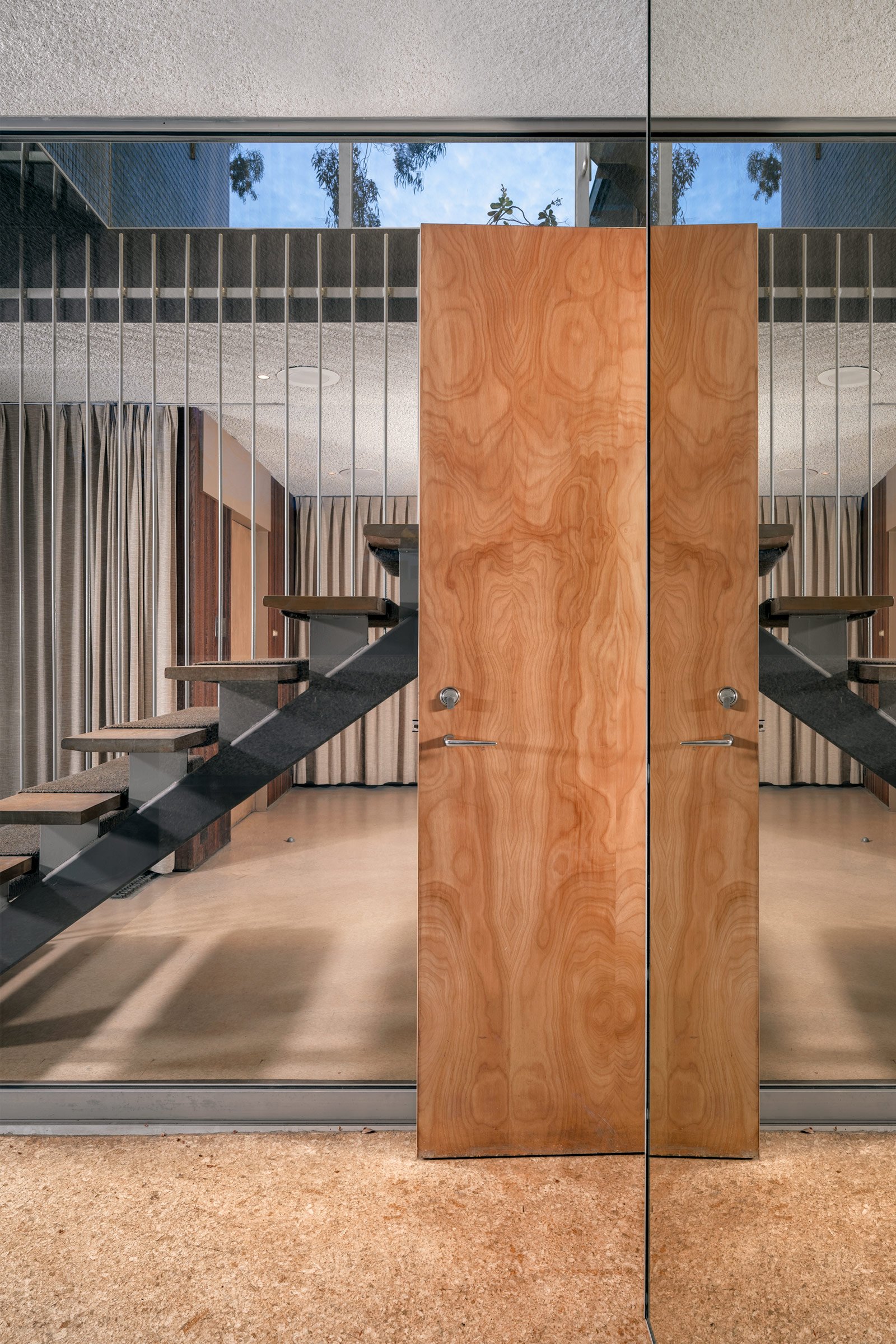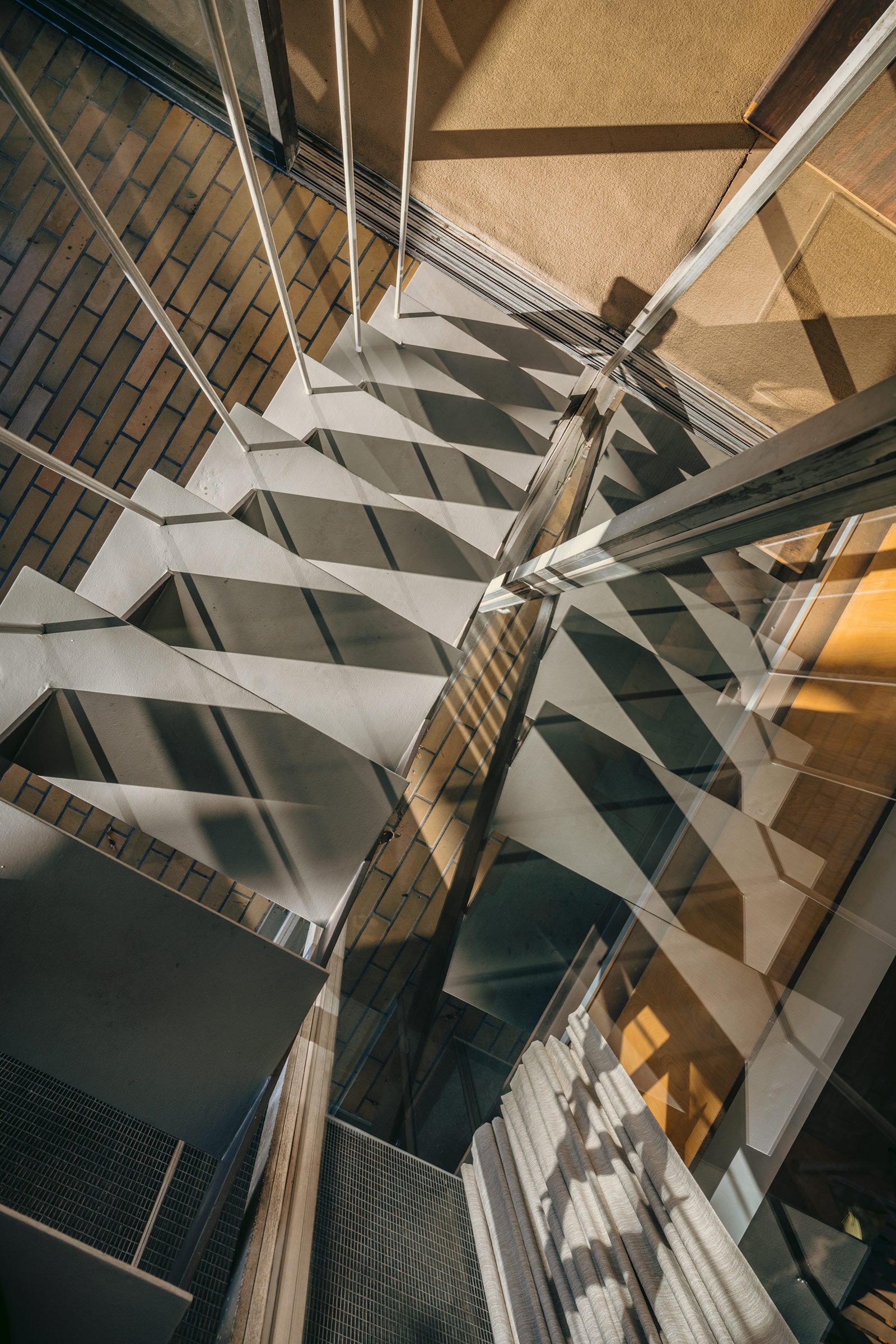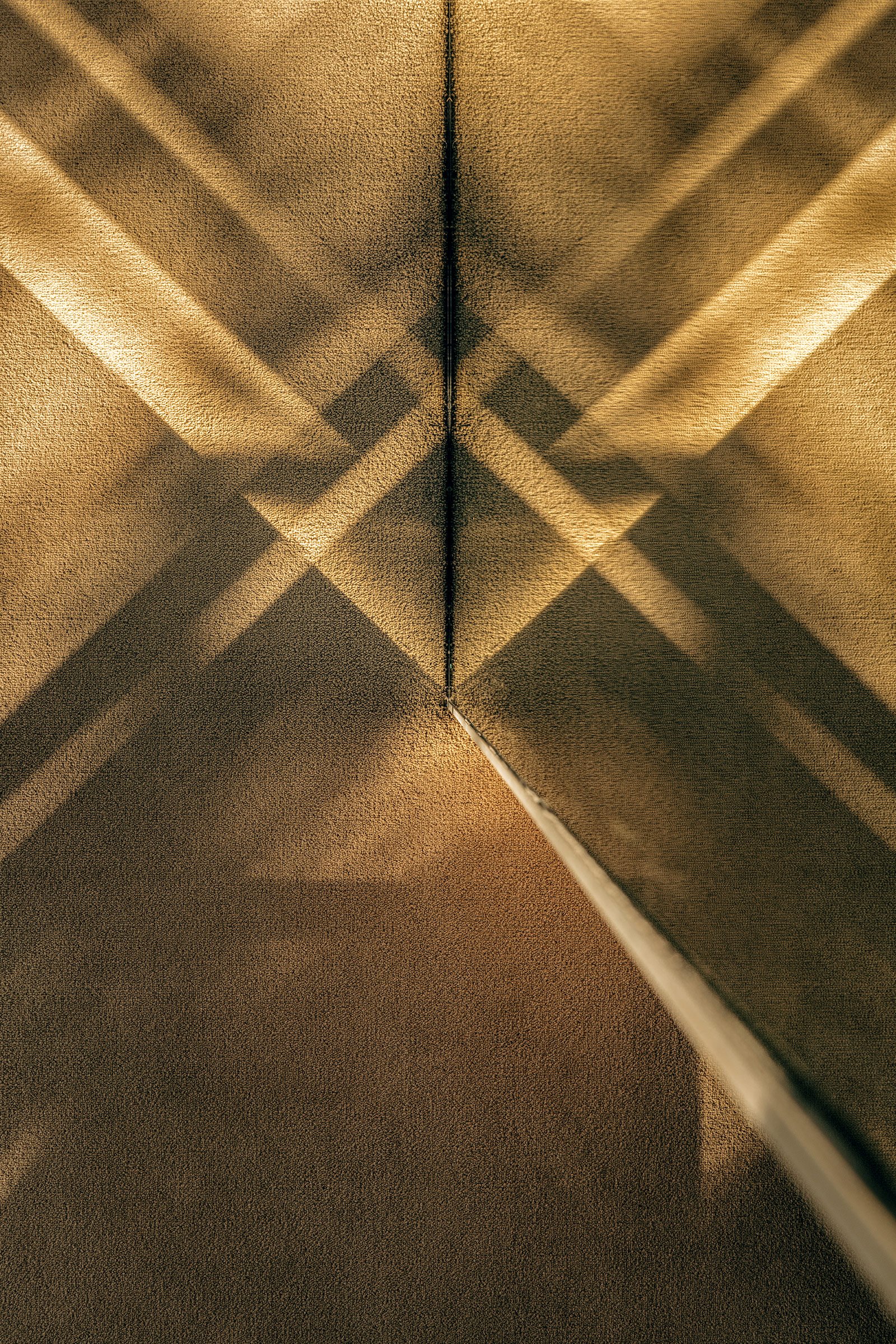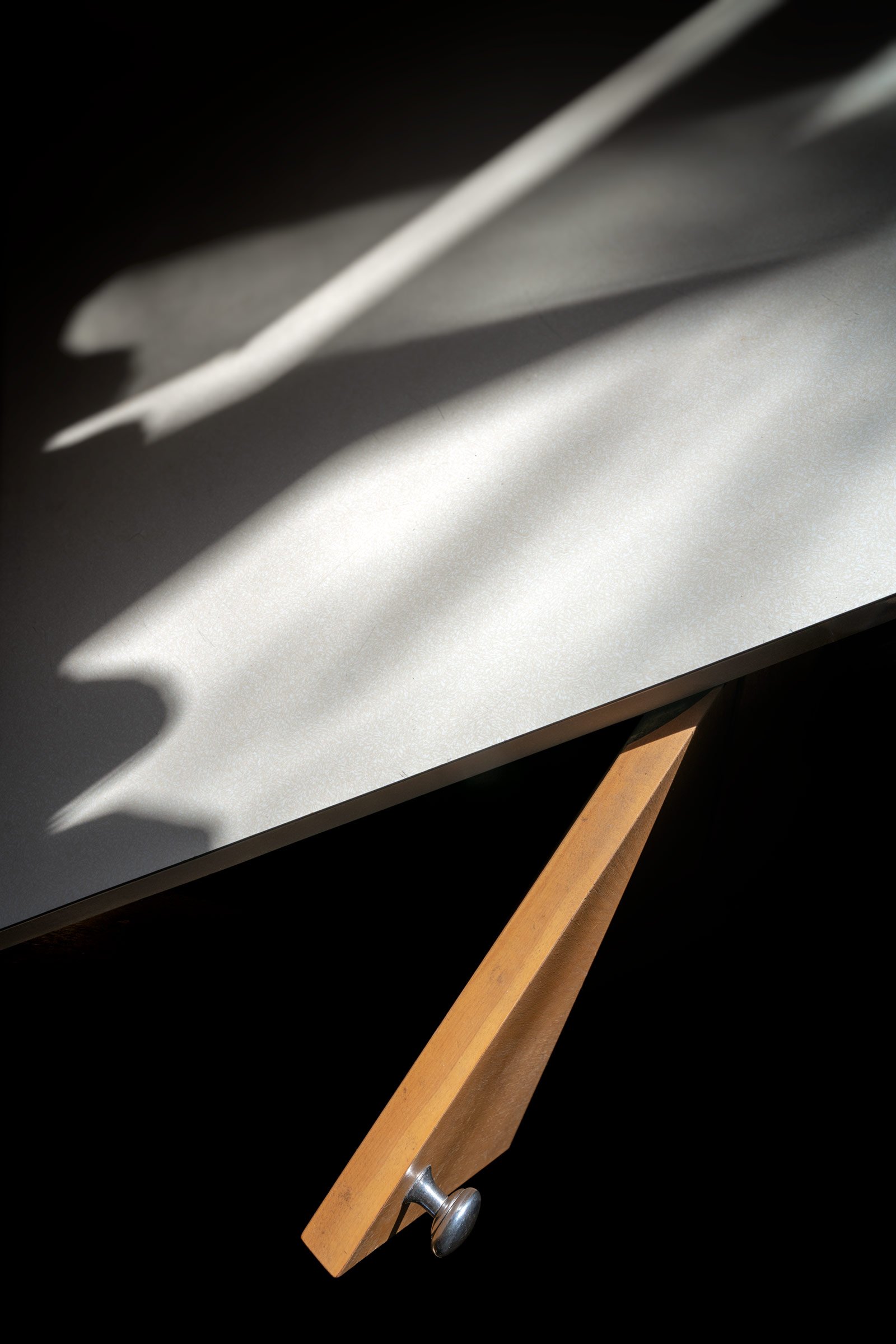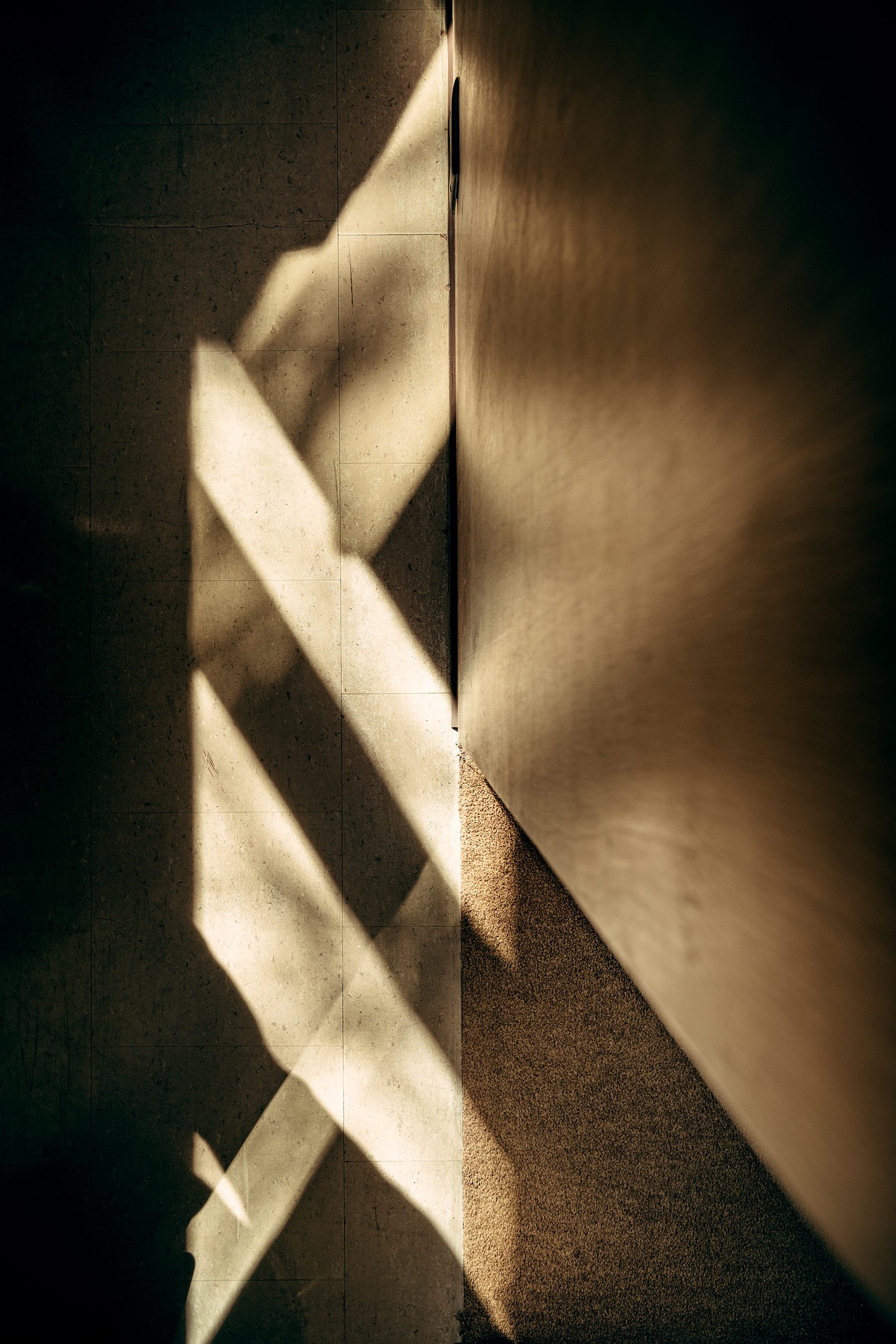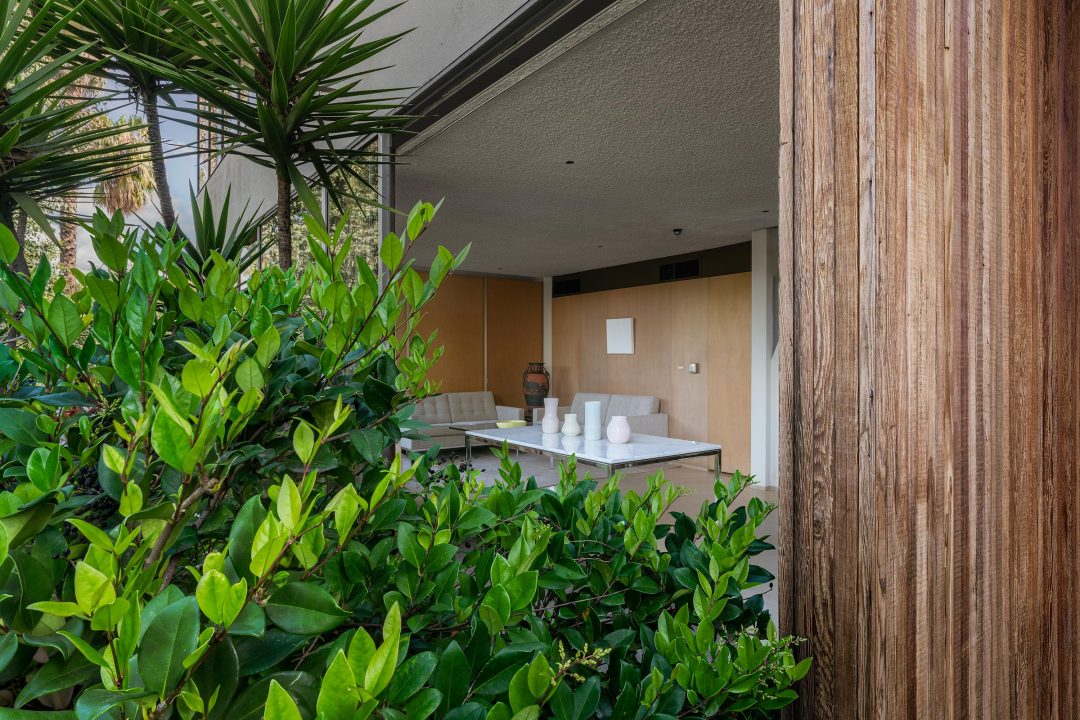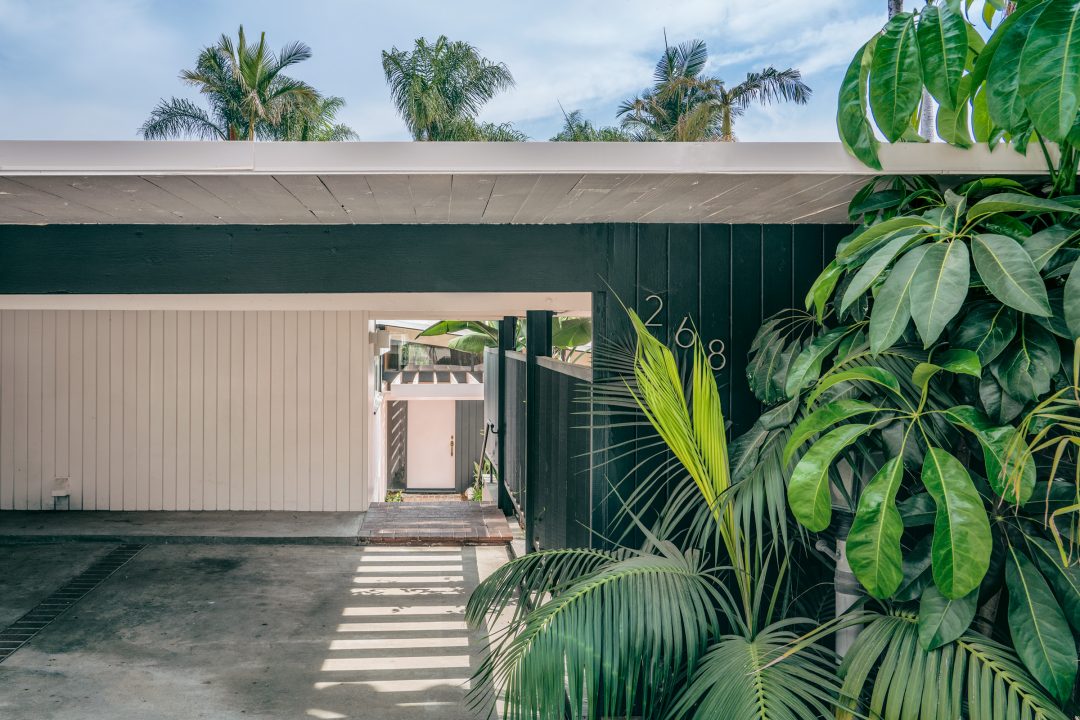Yes, Neutra was interested in blurring the boundaries of inside and outside, but could he have really imagined the moment when both merge, creating a third kind of space, one that is “both and.”
David and his wife Sarah managed the Richard Neutra VDL Studio and Residences historical building in Los Angeles from 2007 to 2020. Their restoration work on the building and gardens was recognized by the U.S. Department of the Interior, naming the house a National Landmark in 2017. To date, the couple have been the longest residents of the structures besides the Neutras themselves. An intimacy rarely afforded to architectural historians.
Neutra’s work is often described as one that privileges the functional over the experiential. The reality, having lived in his own house for over a decade, is quite different. While the Neutra VDL House, the subject of these photographs, contains many of the features of Modernist design: white walls, right angles, a modular structure, and off-the-shelf materials, there are aspects of the house that undermine its Cartesian and functionalist reading. In trying to capture the house I am struck by how often these images convey a world that is illogical and heterogeneous. This other reading of his buildings was something that Neutra was well aware of. In his philosophical book “Survival Through Design,” written in 1954, Neutra describes in great detail the informal and varied qualities of nature that he found most captivating: the way light reflects on water, the color variations of a tree, the complex sounds of a pebbly creek. He writes, “Even the greatest irregularities deliberately created by humans are trifling as compared to the endless complexities of nature.” The richness of this building, and the opportunities that it offers the photographer, is that no space has a singular reading. The spaces in the Neutra VDL house, as seen in this collection of images, is that the building is both solid and that it “melts in the air.” The myriad of reflective surfaces: glass, mirrors, and water, offer up the possibility of creating images that contradict the solidity of architecture. Creating spaces that are both logical and ephemeral. Where the Modern becomes Post-Modern. Each of these photographs captures a moment in time: the particular of a time of day, when inside and outside merge to create a third space. One that is neither of the interior or of the exterior. Yes, Neutra was interested in blurring the boundaries of inside and outside, but could he have really imagined the moment when both merge, creating a third kind of space, one that is “both and.”
